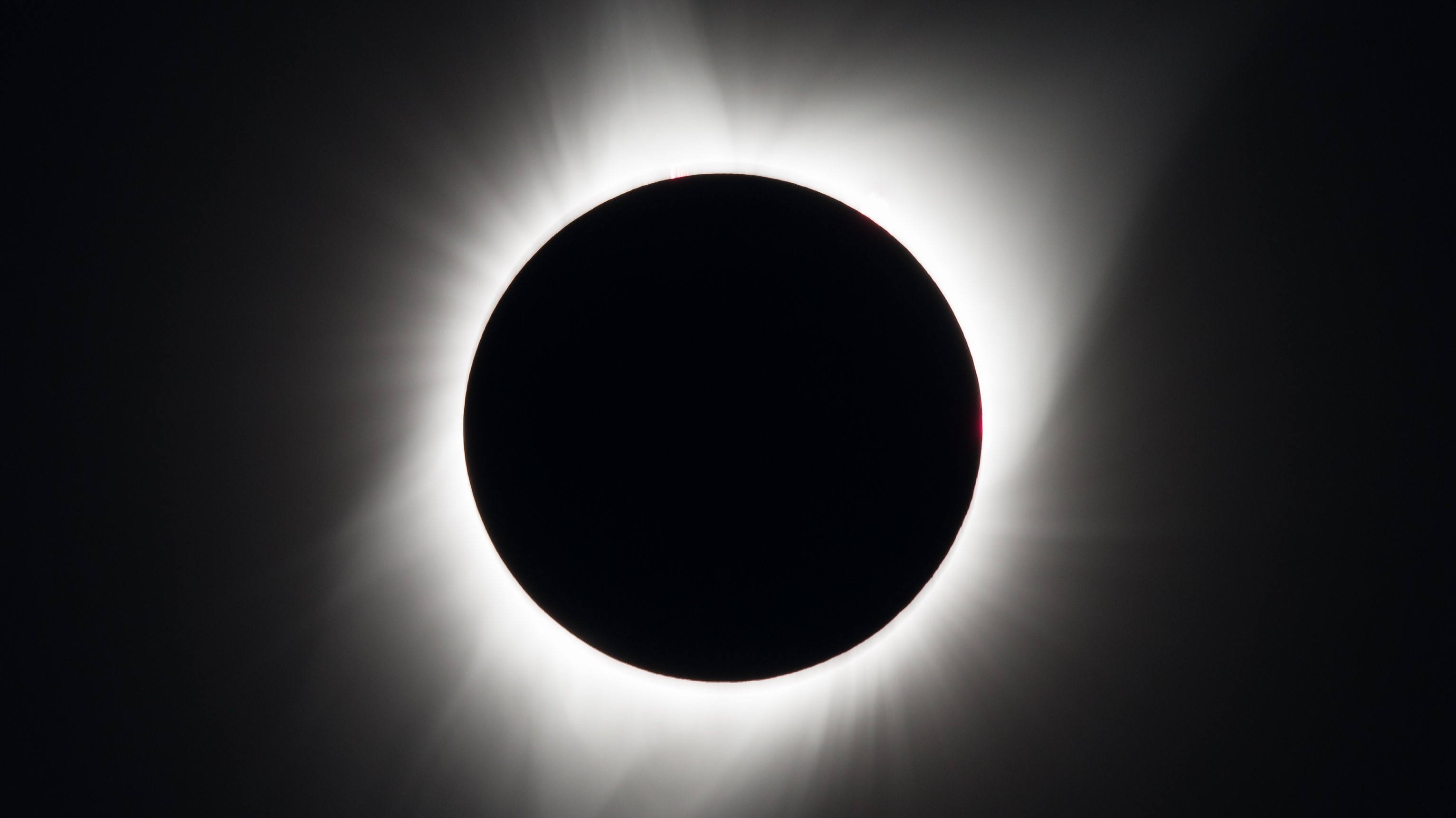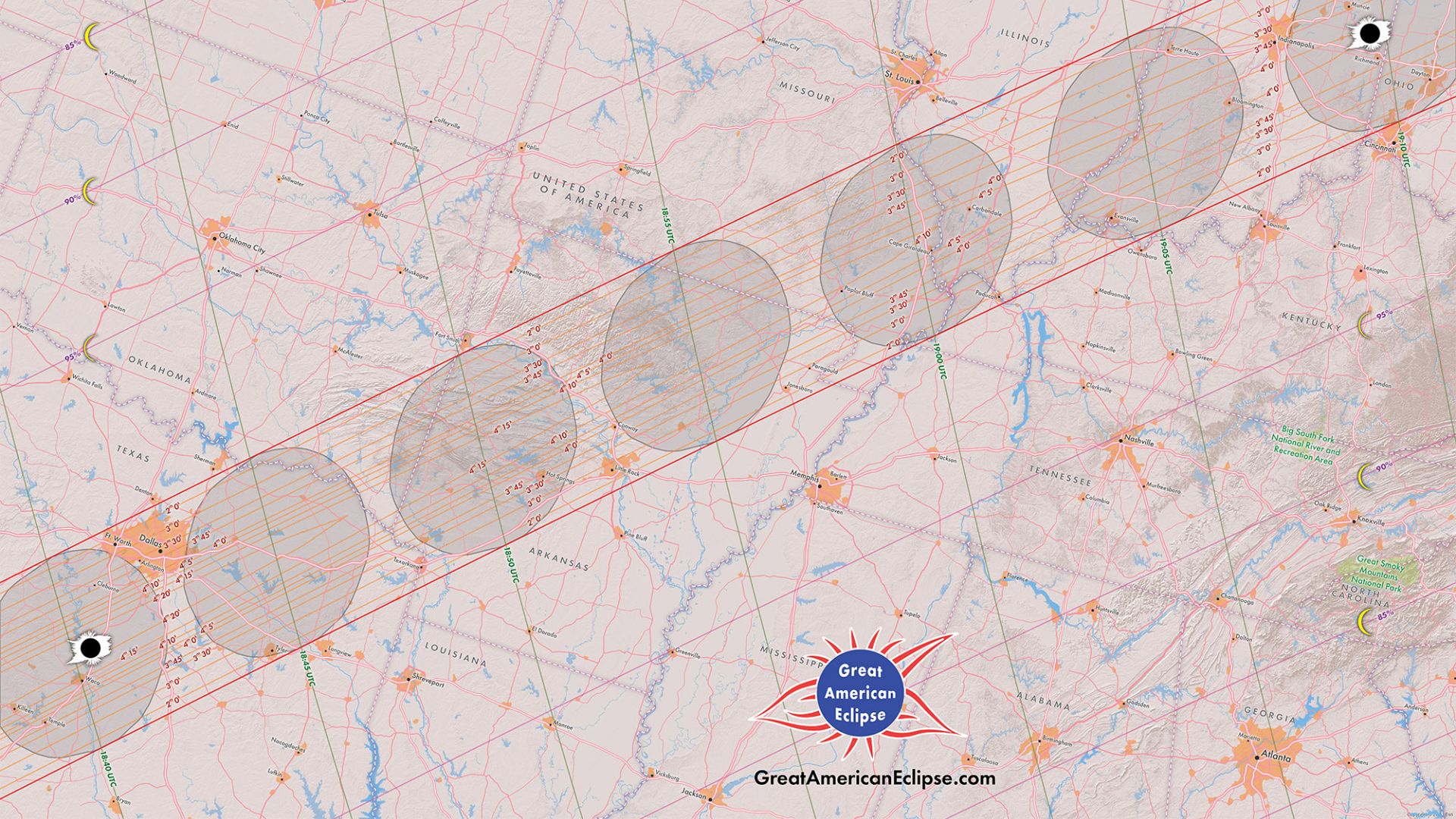
The April 8 total solar eclipse is almost upon us. The event will see the sky over the a band of the United States, Mexico, and Canada darken as the moon totally covers the sun along a 115-mile-wide (185 kilometers) and 10,000-mile-long (16,000 km) strip called the path of totality.
In the U.S., the eclipse will sweep from Texas to Maine, passing over several major cities, including San Antonio, Dallas, Little Rock, Indianapolis, Cleveland and Buffalo. Eclipses aren't actually that rare, with total solar eclipses happening somewhere on the globe around every 16 months and partial solar eclipses happening even more frequently, once every five months or so.
In a recent study conducted by Time and Date in the buildup to April 8 event, researchers set about discovering which, if any, cities on Earth experience the most eclipses. The results also add more precision to estimates of eclipse frequency.
Related: Total solar eclipse 2024: Everything you need to know
The study team delved into a staggering 15,000 years' worth of eclipse data. This allowed them to improve on estimates laid out in 1982 by astronomer Jean Meeus, who studied total and annular solar eclipses over a period of 600 years.
"Retracing the footsteps of the famous astronomer Jean Meeus has been an exciting project — and a surprisingly challenging problem," Time and Date astronomy team member Frank Tveter said in a statement. "Overall, we had to perform more than one trillion checks on eclipses in order to calculate a single number."

Which cities top the eclipse charts?
The team's results suggest that a random city on Earth would experience a total solar eclipse, on average, around once every 374 years. The same city would experience an annular or "ring of fire" eclipse around once every 226 years and a partial solar eclipse around every 2.6 years.
The findings also revealed more details about a "latitude effect" in Meeus' work that suggests solar eclipses happen more frequently at high latitudes, around the Arctic and Antarctic circles. Locations near the equator experience a solar eclipse roughly once every 2.8 years, compared to once every 2.2 years, on average, for Arctic and Antarctic sites.
Why is this? The sun is over the horizon for longer at these high latitudes, meaning there is more time for solar eclipses to occur there. So, statistically, a good place to wait for an eclipse would be Longyearbyen, in Svalbard, Norway, which is the world's northernmost settlement, albeit populated by little more than 2,000 people.
The researchers also discovered that cities in the Northern Hemisphere are more likely to experience total solar eclipses than those in the Southern Hemisphere.
This is because summer in the Northern Hemisphere, when the hours the sun spends over the horizon in this part of the globe are extended, coincides with the point in Earth's orbit at which our planet and the sun are most widely separated. This means the sun is smaller in the sky and thus more likely to be covered completely by the disk of the moon in the Northern Hemisphere summer.
But the timing of Earth's close approach to the sun throughout the year shifts, on a cycle that lasts around 25,000 years. This means, according to the team, that in around 10,000 years, this point or "aphelion" will coincide with winter in the Northern Hemisphere, and the frequency of solar eclipses will then favor the Southern Hemisphere.
No matter how frequently solar eclipses occur in your neck of the woods and whether you live in Longyearbyen or in Pontianak, Indonesia, which sits right on the equator, don't take chances when viewing any eclipse.
If you intend to view any of these stages of the total eclipse on April 8, the most important thing to consider is how to safely view it. Looking at the sun without adequate protection at any time is harmful to the eyes, so eclipse watchers should take precautions on Monday.
Sunglasses, regardless of how dark they are, can't protect the eyes from the effect of the sun, so specialized eclipse glasses made from safe solar filter materials will be needed. If skywatchers intend to watch the event with a telescope, special filters will be needed to make this a safe viewing experience.
Our how to observe the sun safely guide tells you everything you need to know about safe solar observations.
The Time and Date team is currently working on collecting their methods and findings in a full paper to be submitted to the Journal of the British Astronomical Association.







